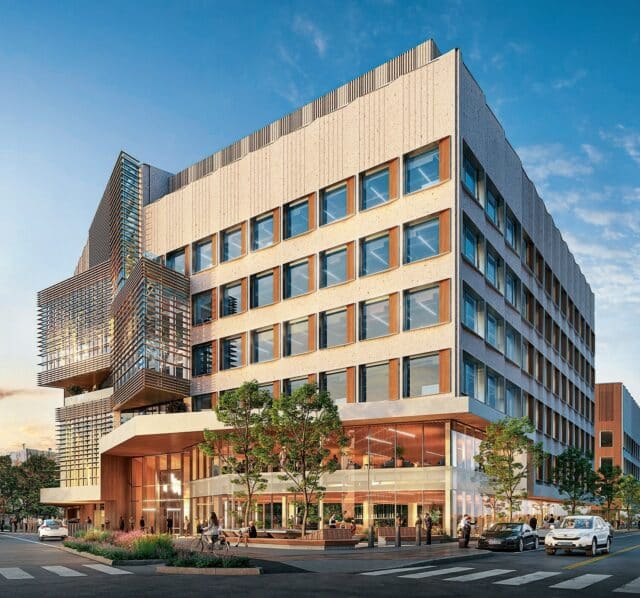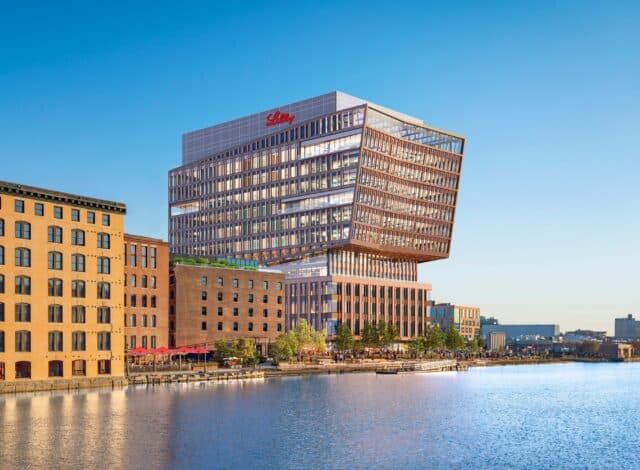
Lexington is studying how to build district-scale geothermal networks to feed the town’s energy-hungry life science clusters. iStock photo
Lexington set a new green building standard when it banned fossil fuel hook-ups in new developments this spring, including life science buildings that often have voracious heating and cooling requirements.
Now town officials and consultants are laying the groundwork for an alternative that could replace natural gas mains with geothermal energy systems. It’s the first study in Massachusetts of geothermal networks’ potential to heat and cool entire neighborhoods of commercial and residential buildings.
“Geothermal has rapidly come back into the conversation because of the cost benefits and the funding from the Inflation Reduction Act,” said Ari Greenberg, a senior associate of HVAC and sustainable design at BR+A Consulting Engineers in Boston. “The incentives there are staggering.”
In December, the Massachusetts Department of Energy Resources approved Lexington’s application to participate in the fossil fuel free building pilot program. The pilot, authorized under the state’s 2022 clean energy law, allows up to 10 communities to ban the use of greenhouse gas-emitting building systems such as natural gas typically used in developments.
The ban took effect March 21, potentially threatening Lexington’s position as a favored suburban destination for lab developers and biotech tenants. Lexington has been one of the prime suburban submarkets for life science development in the past decade, attracting industry-leading developers such as King Street Properties. The town has more than 2 million square feet of life science buildings in office parks near Route 128, including a new 335,000-square-foot project by Trammell Crow Co. nearing completion at 440 Bedford St.

Moderna’s new headquarters at 325 Binney St. in Cambridge includes a geothermal system that extracts heating and cooling capacity from steady temperatures below ground. Image courtesy of Alexandria Real Estate Equities
Looping Together Labs and Housing?
Electric air-source heat pumps are a popular option for developers complying with decarbonization regulations, but real estate industry groups say long backlogs for utilities to install new equipment and the need to expand the electrical grid’s capacity to cope with the systems are downsides.
These heat pumps also have performance limits in extreme cold, forcing developers to activate natural gas boilers for approximately 10 percent of their heating capacity, Greenberg said.
Two of the region’s newest life science projects opted for geothermal systems to drastically reduce fossil fuel use by extracting energy from bedrock.
Moderna’s new headquarters, which opened this spring in Cambridge’s Kendall Square, includes a geothermal well system buried in a long, narrow lot next to the 325 Binney St. lab building, resulting in an anticipated 92 percent reduction in fossil fuel use compared with a conventional utility system, developer Alexandria Real Estate Equities said.
And the new Eli Lilly & Co.’s research institute that opened this month at 15 Necco St. in Boston includes a geothermal system designed to reduce fossil fuel use by 74 percent, according to co-developers Alexandria and National Development.

The 346,000-square-foot Eli Lilly Co. Seaport Innovation Center which opened this month at 15 Necco St. in Boston includes a geothermal utility system designed to reduce fossil fuel use by 74 percent. Image courtesy of Eli Lilly & Co.
There’s Strength in Numbers
Networked geothermal systems tied to multiple buildings, however, can provide additional efficiencies of cost and operations, engineers and officials say.
To that end, Lexington officials this year launched a study of four commercial districts that have significant future development potential. The study areas include Hartwell Avenue, Bedford Street, Waltham Street and office parks on Hayden Avenue and Spring Street. Developers seeking approval for Lexington projects, including BXP, are taking part in the study. The Boston-based REIT submitted plans this month to develop 312 apartments at 17 Hartwell Ave.
A grant to the town of Lexington from Boston-based nonprofit HEET Inc. is paying for the preliminary study.
“We can pay to build these little networks,” said Zeyneb Magavi, executive director of HEET Inc. “The first ones are the most expensive. As they get built, they get more cost-effective.”

Steve Adams
Consultants including Grey Edge Group and BR+A are studying the energy demand from properties within the districts, funding models and potential well field locations before recommending whether to proceed with detailed designs for one or more districts, said Maggie Peard, Lexington’s sustainability and resilience officer.
The Hartwell Avenue and Bedford Street districts also allow by-right multifamily development under Lexington’s MBTA Communities zoning. That points to an advantage in geothermal networks. Connecting different types of buildings – such as housing and labs – that have peak heating and cooling demands at different times of day maximizes the efficiency of a geothermal network, Peard said.
Under the Inflation Reduction Act, developers are eligible for tax credits ranging from 30 to 50 percent of the cost of geothermal systems, HR+A’s Greenberg said. Hybrid systems including geothermal and other energy sources can qualify for tax credits that cover not just the cost of the well field, but parts of the entire HVAC system.
“It’s a pretty game-changing way to go,” Greenberg said. “We start every project with an analysis of: is there enough physical space on the site to install geothermal? If so, it’s pretty reasonable to convince an owner to do geothermal.”






